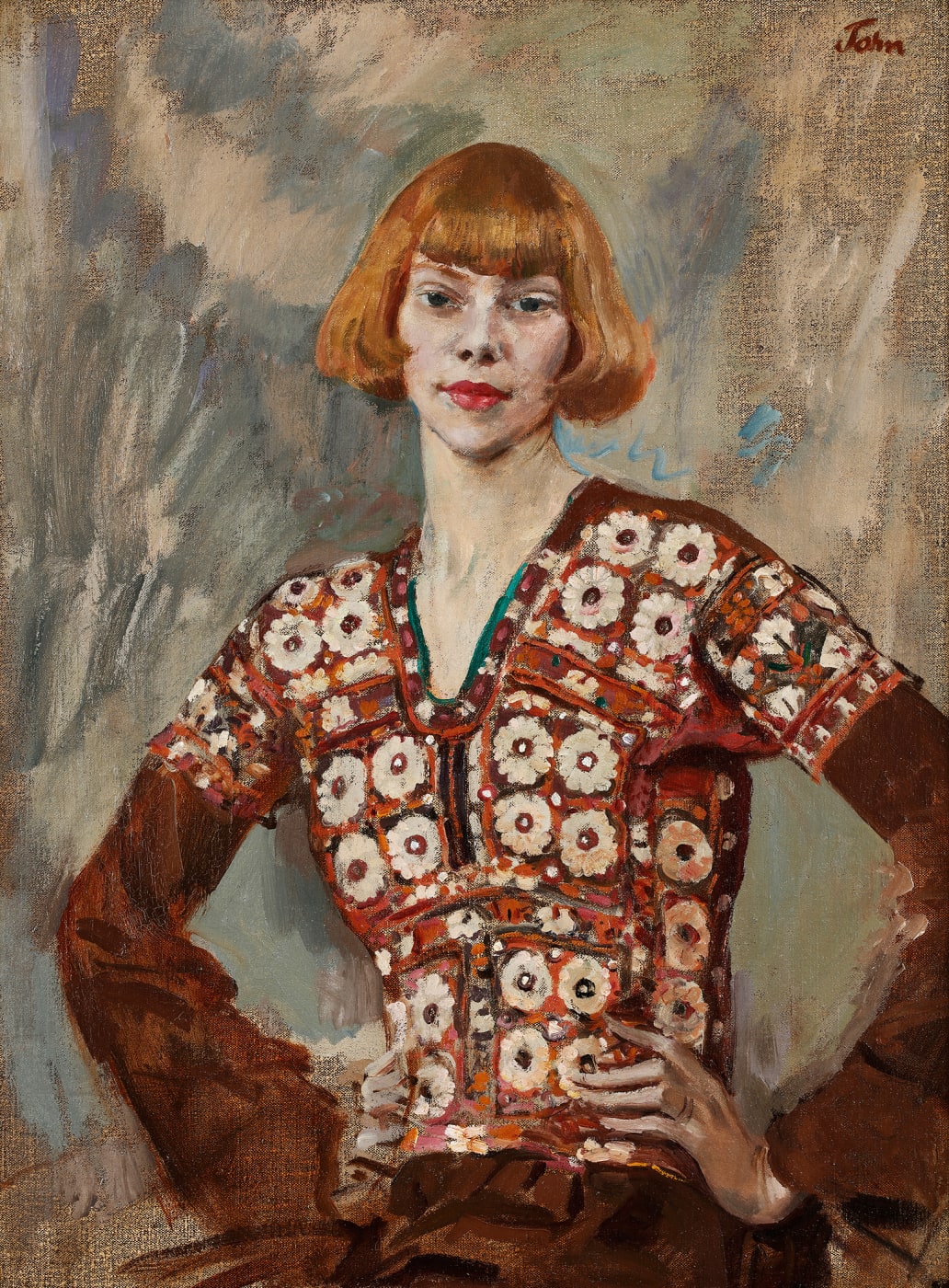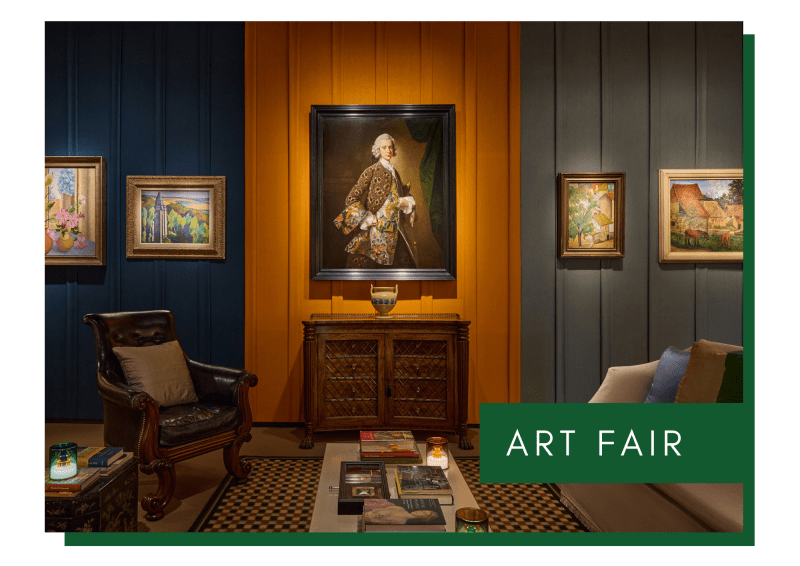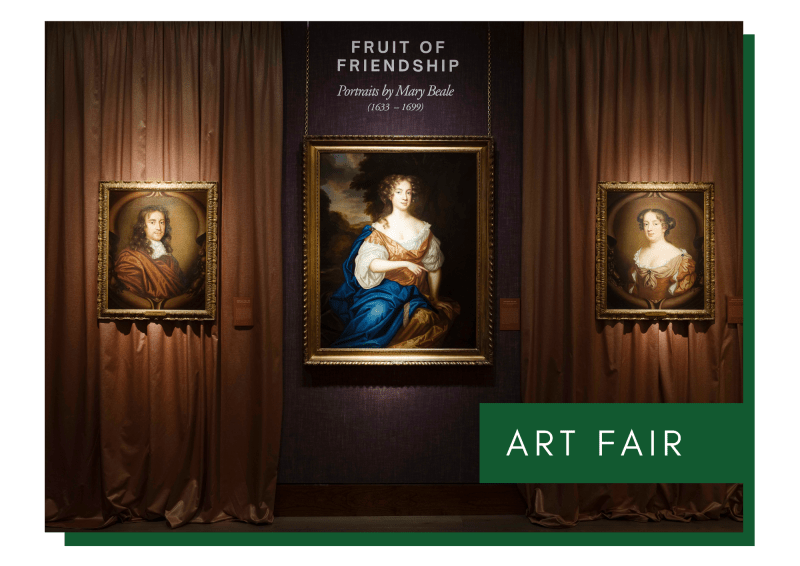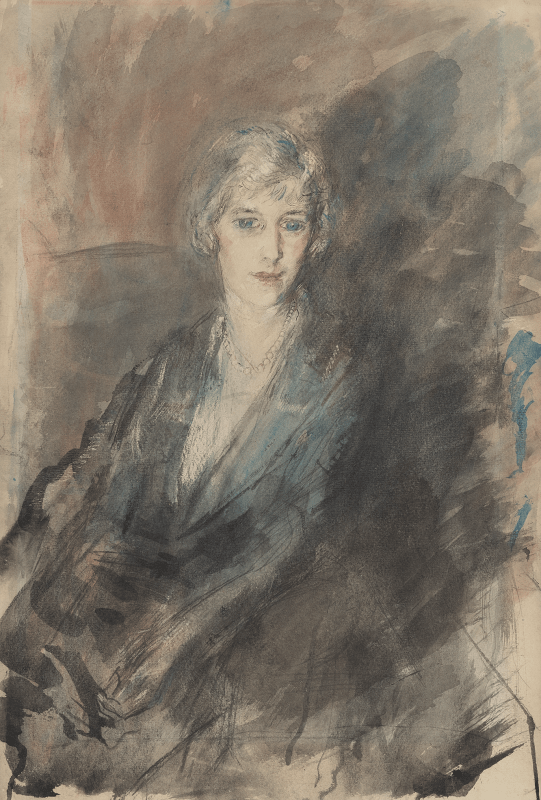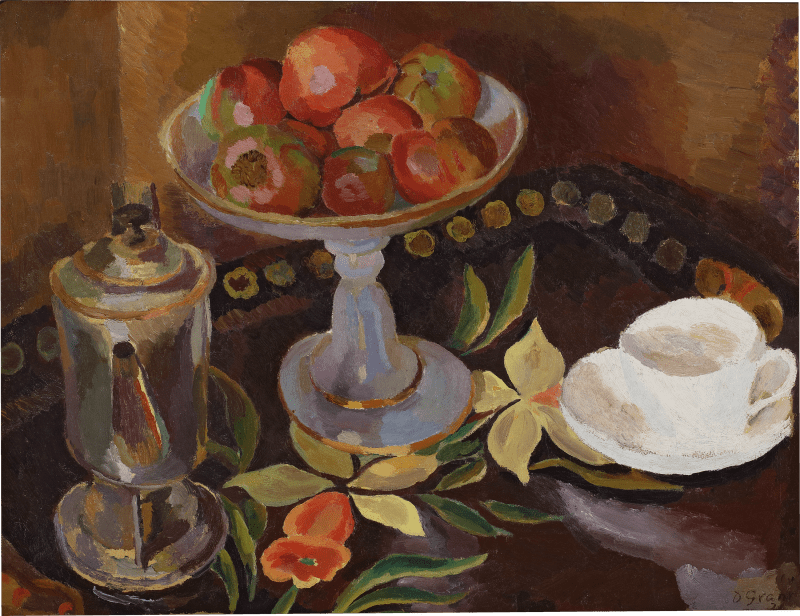Full Biography
Augustus John was a Welsh portraitist, landscape painter, draughtsman, lithographer and etcher. He is known primarily for his penetrating portraits of distinguished contemporaries and was a significant exponent of Post-Impressionism in England, pioneering the technique of oil sketching directly onto bare canvas.
Born in Tenby, Pembrokeshire, John was the youngest son of Edwin William John, a Welsh solicitor, and Augusta Smith, born of a long line of Sussex master plumbers. It was Augusta who instilled a passion for drawing in the young Augustus and his sister Gwen John. At seventeen, John attended the Tenby School of Art, leaving in 1894 to study at the Slade School of Fine Art, University College London, until 1899. He quickly established his name as the star pupil of the drawing master, Henry Tonks.
John endured a head injury while swimming in 1897, which is said to have permanently altered his character, yet rather surprisingly, the incident seems to have stoked his artistic ambition, and he went on to win the Slade Summer Art Prize the following year. John was already recognised as a talented draughtsman, and he used his prize money to visit a Rembrandt exhibition in Amsterdam.[1]
Augustus John was a Welsh portraitist, landscape painter, draughtsman, lithographer and etcher. He is known primarily for his penetrating portraits of distinguished contemporaries and was a significant exponent of Post-Impressionism in England, pioneering the technique of oil sketching directly onto bare canvas.
Born in Tenby, Pembrokeshire, John was the youngest son of Edwin William John, a Welsh solicitor, and Augusta Smith, born of a long line of Sussex master plumbers. It was Augusta who instilled a passion for drawing in the young Augustus and his sister Gwen John. At seventeen, John attended the Tenby School of Art, leaving in 1894 to study at the Slade School of Fine Art, University College London, until 1899. He quickly established his name as the star pupil of the drawing master, Henry Tonks.
John endured a head injury while swimming in 1897, which is said to have permanently altered his character, yet rather surprisingly, the incident seems to have stoked his artistic ambition, and he went on to win the Slade Summer Art Prize the following year. John was already recognised as a talented draughtsman, and he used his prize money to visit a Rembrandt exhibition in Amsterdam.[1]
In 1898, John went to Paris to study the Old Masters in the Louvre. He also absorbed influences from his French contemporaries, most notably, Matisse and Gaugin. John’s vivid colour palette and emphatic form evoke the work of Botticelli, Picasso and particularly Puvis de Chavannes.[2]
In 1901, John married Ida Nettleship and together they had five children, with John accepting a role as art teacher at the University of Liverpool to support them before moving to London in 1902, where he founded, with his Slade compatriot William Orpen, the Chelsea Art School (1903–7). In 1903 he was elected to the New English Art Club, and met his famous muse, Dorothy McNeill, known as ‘Dorelia’. John’s complex love life saw him father children with both women and juggle two families until Nettleship’s death in 1907. He and Dorelia had two further children.
During the First World War, John spent two months in France as a war artist, painting several memorable portraits of Canadian infantrymen. His style during this period has been described as rather superficial; but his later portraits of important politicians, society and literary personalities, actors, dancers recaptured his characteristic boldness of form and colour.
John was elected an Associate of the Royal Academy (1921), then Academician (1928), and a member of the London Group (1940). He was awarded the Order of Merit by King George VI in 1942, acted as a trustee of Tate (1933–41), and was elected President of the Royal Society of Portrait Painters (1948–53).
The majority of John’s laterworks are portraits, now famed for their profound psychological impact. Besides his famously wayward nature and bohemian lifestyle, the Pembrokeshire born artist, John is best remembered for capturing the very essence of each sitter’s character with a real sensitivity for the human condition.
John wrote two volumes of autobiography, Chiaroscuro (1952) and Finishing Touches (1964). The National Gallery held a retrospective of his drawings in 1940, and the Royal Academy hosted a further major retrospective in 1954. He died in 1961.
Over the years, Philip Mould & Company have had the privilege of handling some outstanding works by John, including David, the artist's son and Iris Tree, both viewable in our Picture Archive.
[1] Magill, Frank N., The 20th Century Go-N: Dictionary of World Biography, Volume 8, (Routledge, London, 2014), p. 1858.
[2] Easton, Malcolm, and Holroyd, Michael, The Art of Augustus John, (David R. Godine, 1975), p. 13
